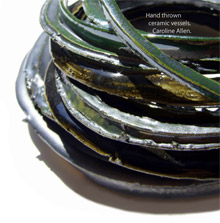Regina Hofmann-de Keijzer, Maarten R. van Bommel, Ineke Joosten (University of Applied Arts Vienna, Cultural Heritage Agency of the Netherlands)
Modern chromatographic and microscopic techniques allow an insight in the beginning of textile dyeing in Europe. The presentation will focus on the investigations of coloured Bronze Age textiles from Hallstatt, Mitterberg and Radfeld (Austria) and Pustopolje (Bosnia-Hercegovina), which were performed during the CinBA project1. The results will be compared with those of the Hallstatt textiles from the Early Iron Age. In co-operation with the Prehistoric Department of the Natural History Museum Vienna, the dye analyses of the Hallstatt textiles took place since 20022,3, especially during the research project “Dyeing techniques of the prehistoric textiles from the salt mine of Hallstatt – analysis, experiments and inspiration for contemporary application” (2008 – 2012) which was supported by the Austrian Science Fund FWF [L 431-G02]4,5.
High performance liquid chromatography with photo diode array detection (HPLC-PDA) was used for dye analysis. Additionally, the fibres of the textile fragments were examined by optical light microscopy and scanning electron microscopy coupled to energy dispersive spectroscopy (SEM-EDS). The microscopic techniques were carried out for observing special dyeing techniques and for evaluating the condition of the textile fragments. By SEM-EDS those elements were analysed which could have influenced the colours.
The possibilities and limitations in identifying the dyes and the dyeing material will be discussed. What are the limiting factors scientists are confronted with? The identification of dyes is sometimes hampered by analytical issues. Compared to historical textiles much less prehistoric ones have been analysed. While in later periods cultivated dye plants were preferably used, in Prehistory the emphasis lay on wild plants. The fingerprints or markers of these plants are not known. If no dyes or no coloured components are detected, it cannot be concluded that the textile was not dyed as the dyes could be below the detection limit due to degradation. In many archaeological textile fragments only unknown coloured components are detected. It will be discussed why in that case one cannot draw the conclusion whether a fabric was “dyed” or “not dyed”.
It is likely that in the Bronze Age the experimental phase of textile dyeing started simultaneously with the introduction of wool. Many plants were tested if they are suitable for textile dyeing which led to the use and cultivation of specific dye plants in a later phase.
References
1 Maarten R. van Bommel, Ineke Joosten, Regina Hofmann-de Keijzer, 2013: Dyestuff, mordant and condition of an early wool textile from Pustopolje, Bosnia-Hercegovina, and of Bronze Age textiles from copper mines of Mitterberg and Radfeld, Austria. Internal reports, Cultural Heritage Agency of the Netherlands, Amsterdam and University of Applied Arts Vienna.
2 Peter Bichler, Karina Grömer, Regina Hofmann-de Keijzer, Anton Kern, and Hans Reschreiter (Eds.), 2005: Hallstatt Textiles – Technical Analysis, Scientific Investigation and Experiment on Iron Age Textiles. BAR – British Archaeological Reports, International Series 1351, Oxford, Archaeopress, 2005.
3 Regina Hofmann-de Keijzer, Maarten R. van Bommel, Ineke Joosten, Hans Reschreiter, Karina Grömer, Helga Rösel-Mautendorfer, Anna Hartl, Michaela Morelli, 2005: Ancient textiles – recent knowledge. A multidisciplinary research project on textile fragments from the prehistoric salt mine of Hallstatt. ICOM-CC 15th Triennial Meeting, The Hague 2005, London, James & James, pp. 920-926.
4 Regina Hofmann-de-Keijzer, Maarten R. van Bommel, Anna Hartl, Karina Grömer, Helga Rösel-Mautendorfer, Hans Reschreiter, Katrin Kania, Ineke Joosten, Art Néss Proaño Gaibor, Rudolf Erlach, Eva Lachner, Manuel Wandl, Matthijs de Keijzer: Coloured Hallstatt Textiles – 3500-year-old Textile and Dyeing Techniques and their Contemporary Applications, Contributions to the publication of the 11th Northern European Symposium for Archaeological Textiles (NESAT), 2011, Esslingen, in preparation.
5 Regina Hofmann-de-Keijzer, Anton Kern, Barbara Putz-Plecko (Eds.): Colours of Hallstatt – Textiles connecting Science and Art, Magazine to the Exhibition “Colours of Hallstatt – Textiles connecting Science and Art”, Natural History Museum Vienna, February 1, 2012 – January 6, 2013 (extended until December 30, 2013).


